Reading Room Search
Go here for complete Reading Room Article Index
Displaying 126 - 150 of 607 If they are to fully harness the power and potential of exciting new technologies and multimedia, our students must be offered the critical criteria and information skills necessary for them to become intelligent, competent consumers and creators of media messages.
Read entire report.
Television is an amazingly powerful communication tool. Its images of culture, family, relationships, and events give us opportunities to socialize, teach, and inspire both children and adults. Empowered parents and communities are responsible for guiding the placement of television in the process of human development.
Read entire report.
Today most prevention practitioners and researchers, as well as concerned teachers and parents, recognize that many of the messages we get from the media are risk factors for numerous public health problems. From the time we wake up to the radio alarm clock to the time we fall asleep with the TV on, we live in a media culture. We cannot escape the media's influence on either our healthy or unhealthy behaviors.
Read entire report.
Parents and Teachers: Team Teaching Media Literacy
By Milton Chen, PhD, Sara Armstrong, PhD and Roberta Furger When it comes to media, our children are mass consumers.
On average, each of them spends 1,500 hours a year watching television. Roughly 17 million children and teens have Internet access in their homes, and most of them use it daily for everything from researching school projects to playing online games to sending instant messages or chatting with their classmates. They go to movies and watch music videos. Headphones and CD players have become so much a part of the middle and high school students' "uniform" that backpacks are now designed to accommodate the gear.
But for all their... Read More
Think. Interpret. Create: How Media Education Promotes Critical Thinking, Democracy, Health and Aesthetic Apppreciation
By Robert Kubey, PhD Media literacy education is at a watershed moment around the world. We are making the inevitable and gradual turn to changing what we do in classrooms and at home to make education more student-centered and responsive to children's and society's real-world needs.Read entire report.
Learning With Technology
Evidence that Technology Can, and Does, Support Learning By James M. Marshall, PhD / San Diego State University
Introduction
Does technology have a positive impact on teaching and learning? Is television an effective teaching tool? How can Internet content be best used by students and teachers?
To explore these questions, Cable in the Classroom commissioned a report that aggregates known research on technology's impact on learning. James Marshall, Ph.D., former director of research at Lightspan Inc., and currently an adjunct faculty member in the Department of Educational Technology at San Diego State University, reviewed existing evidence of technology's impact on learning to evaluate the content... Read More
In this eloquent argument for a deepening of visual literacy education beyond fostering skills of critical analysis, the author takes us inside the creation of a movie produced by his college students. He points out that the process of creating visual images not only viewing and analyzing them contributes greatly to students' understanding of visual information and to their development of cognitive abilities.Read Article
The Media Commission of The National Council of Teachers of English met at the NCTE conference in Seattle in November 1991 to explore and evaluate a number of issues central to the future of media education in the United States. The Commission is a special interest group and advisory body for the NCTE that issues an annual "Trends and Issues Statement" on media as it relates to the Language Arts. The Media Commission issued the following recommendations to encourage:
Portfolios of student work that include a wide variety of media forms, as a welcome and healthy trend in teaching and... Read More
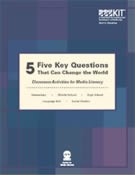
While commercial media is created to generate profit, non-commercial media has many motivations – from influencing people how to vote or sharing ways to protect the environment to convincing us the world is flat or promoting racist beliefs. With so much information available today through media, students need to be able to recognize media messages that are motivated by power and persuasion in order to become independent and critical thinkers. First, students will search for and discuss media messages that have purposes other than just making money. Then group production projects will help... Read More
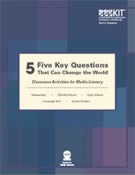
Knowing why a media message is being sent is important because it gives us a context for interpretation and clues for how to respond. Students begin their exploration of motive by generating ideas about why people communicate and organizing them in the three basic categories that media scholars identify: to inform, to persuade or to entertain. They will then choose one topic and create three media texts that communicate that topic in one of the three ways: informing, persuading and entertaining. By stimulating the process of questioning motivations of media messages, this activity prepares... Read More
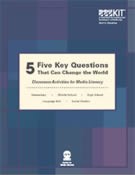
Keeping track of who is renting our eyeballs is more difficult today as "stealth ads" become embedded into the content of movies, TV shows and video games. Known as product placement, it is an increasingly common practice whereby advertisers pay media makers to use or display their products as props yet never reveal this arrangement as a form of advertising. Having students locate product placements in a media programs helps them understand the economics of the media they consume. Creating their own product placements for good causes reveals the strategy behind the practice.
Download... Read More
Literacy for the 21st Century: An Overview & Orientation Guide to Media Literacy Education
CML's plain language introduction to the basic elements of inquiry-based media education.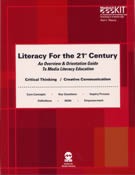 |
|
| 1st EDITION Deconstruction Only Download the document: In English En Español |
|
SECOND EDITION
Now expanded to include the Questions/TIPS (Q/TIPS) for both construction/production and deconstruction!
How does media literacy relate to the construction of media? How can critical thinking be taught and learned while students are producing media?
It's not enough to know how to press buttons on technological equipment: thinking is even more important. Find out how to connect thinking with production in CML's newly published 2nd Edition of Literacy for the 21st Century!
In a short and readable format, it:
Provides a complete framework for critical... Read More
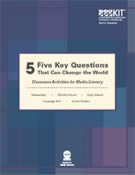
Sometimes what is missing from a media message can be more important than what is included. Using stories and events found in classroom texts, students select one story and generate a list of all the people who are missing from the story but who could have been affected by the events. Then they choose one person and retell the story from his/her missing perspective. Being able to recognize and name missing perspectives is a critical skill in today's media culture.
Download lesson plan # 4E
NOTE: This lesson plan is one of 25 cornerstone lesson plans for media literacy education... Read More
The purpose of this questionnaire is to get you thinking about the media and its influence on you and on society in general. Please answer the following questions as honestly and completely as possible.
What is your favorite media? How much time do you spend with it each day? each week?
Please describe the different kind of media that you know about. Which one do you think is the most powerful? Why?
The average U.S. teenager watches about four hours of television every day. What do you think is the impact of this? Disadvantages? Advantages? How much television do you watch?... Read More
Teaching Media Literacy in the ESL Classroom
A veteran language teacher outlines why it's important and strategies that work. By Arnie Cooper Both ESL theory and classroom practice point to an understanding of the target culture as a necessary element in second language learners' ability to master English. In this country, nothing offers a clearer window into our culture than the media. From Hollywood's entertainment and music industry to AOL/Time Warner's CNN, America's pervasive media not only reflects our value system but also influences our society on many levels.
In so doing, it provides an excellent springboard for a broad spectrum of skill building activities for English language learners. Indeed, many ESL publishers have... Read More
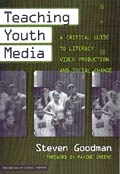
Since 1984, Educational Video Center (EVC) in New York has trained and assisted hundreds of young people in producing award-winning broadcast quality video documentaries. But to EVC Founder Steve Goodman, the goal is not external rewards but internal transformation. In this excerpt from an interview conducted in 1993 by Kathleen Tyner for Strategies newsletter, he explains the importance to media literacy of young people creating and producing their own video documentaries. In addition to publishing several excellent handbooks for video production, Goodman published in 2003 a major new... Read More
What is Media Literacy? NAMLE's Short Answer and a Longer Thought
Originally written and published by AMLA (2001) which is now NAMLE. National Association for Media Literacy Education (Previously Alliance for a Media Literate America)
The Short Version
Media literacy empowers people to be both critical thinkers and creative producers of an increasingly wide range of messages using image, language, and sound. It is the skillful application of literacy skills to media and technology messages. As communication technologies transform society, they impact our understanding of ourselves, our communities, and our diverse cultures, making media literacy an essential life skill for the 21st century.
...And A Broader Definition
Within North America, media literacy is seen to consist of a series of communication competencies,... Read More
Why I've Stopped Watching the 11 O'Clock News"
Keynote Response: Conference on Ethics in the News Media By Elizabeth Thoman
Last summer I stopped watching the 11 o'clock news — on any channel. In years gone by I was a devotee of Channel 2's evening effort. That's when Connie Chung, Marcia Brandywine, Maclovio Perez and Jim Hill handled the newscast. Few of my friends around the country could believe that a major TV market would turn its 11:00 news over to not one but two women anchors, an Hispanic weatherman and a black sportscaster.
Actually I was rather proud that the then KNXT — under Van Gordon Sauter, I believe — had the guts to put that news team together — not because they were singularly unique — not one... Read More
TV's New Ratings Game
How the V-chip works and its challenge for parent education. By Elizabeth Thoman
For dozens of years, TV executives have told us that one thing determines the selection of what airs on television: ratings.
For years, they meant the Neilsen ratings, the system of counting how many people of specific ages and income levels are watching each TV show at any one time. Knowing the viewing ratings of each program was important because the more people who watch from the most desirable audiences, the greater the dollar value per minute of commercial time the networks or stations could charge.
That's how television in the U.S. worked. Until now.
1996 may be remembered not only... Read More
Media Literacy for the '90s - U.S. Style
An overview of the challenges to implementing media literacy in the USA By Elizabeth Thoman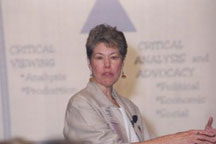
In recent years, as I have travelled around the world to Manila for WACC's first congress or to Europe to connect with colleagues at conferences, I am often greeted with the question: what is the U.S. doing in media education? Upon hearing my reply of "very little," the cry is universal: How can a country that so blatantly inundates the rest of the world with its cultural products be so uncritical of what it's producing?
The answer lies in a complex political and economic media structure as well as a general myopia about the longterm impact of technology on social systems and family... Read More
Media, Technology and Culture: Re-Imagining the American Dream
Keynote address for the annual convention of the National Association of Science, Technology and Society January 16, 1993 By Elizabeth Thoman
NULL
Gospel Challenge of Media Literacy, The
How the rise of an "image culture" created the global consumer economy - and what we can do about it. By Elizabeth Thoman, CHM Like most middle-class children growing up in the 1950's, I grew up looking for the American Dream.
In those very early days of TV, there were no cartoons. There was the Mickey Mouse Club, and Howdy-Doody of course. And Kukla, Fran and Ollie. But one program I also distinctly remember watching on Saturday afternoons — with some awe, I might add — was Industry on Parade. I felt so proud week after week to see tail-finned cars rolling off assembly lines, massive dams taming mighty rivers and sleek chrome appliances that would make life more convenient for all of us.
I also remember hearing... Read More

There has been ample documentation in the past few years that the mass media are hardly a girl's best friend. It seems as if every time we turn on the TV or open a magazine advertisers try to make those of us born before 1970 feel like over-the-hill lumps of hideous cellulite in desperate need of a scalpel and a lifetime supply of Retin-A.
Women like me are not too happy with the seeming insistence of those selling hair dye or skin cream that unless we all look like Christie Brinkley, act like Krystle Carrington, and shut up already about equal rights, we're worthless.
Women are angry at the... Read More
Insider's Game: Talking Politics on TV
How political talk on TV is staged as an "insider's debate" open to the privileged few whose differences are often as narrow as a dime. By David Croteau and William Hoynes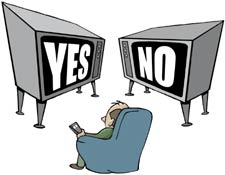
Absence of diversity has substantial consequences for the way the news depicts the political world. Politics, according to most major news media, is not about broad questions of power — who wields it, in what arenas, under what circumstances, with what consequences — nor is it a forum for wide-ranging debate and controversy about current events.
Instead, politics is framed as an insider's debate, where only a privileged few are invited to the table. Journalists are not unaware of the choices they make; they define news in such a way that such narrow debates become inevitable.
Too often,... Read More
Adapting the Five Key Questions to Different Ages
As children grow, their ability to question broadens and deepens. By Elizabeth Thoman and Jeff Share To adapt media literacy to various age groups, it is helpful to know how children and young people of different ages process the world, and how each state of development influences how they process and learn about the media world in which they are growing up. Developmental psychologists generally break childhood into five different developmental stages, although, of course, children grow and develop at their own unique pace, regardless of what the "experts" project.
Age 0-2 : The Senses AwakenSymbolic thought begins during the first two years of life and parents need to provide a safe and... Read More

